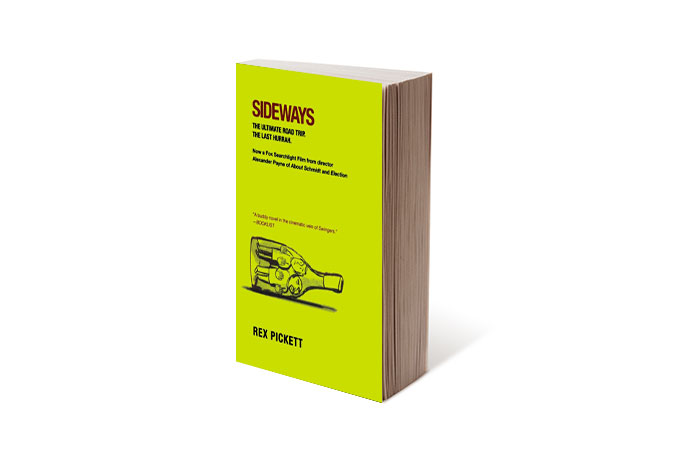Sideways is almost old enough to drink. That’s fitting, as the Alexander Payne-directed dark comedy places a large emphasis on wine. One of the most entertaining movies out there, Sideways is also a dynamic creature — also, like wine — with tons of detail and and nuance.
What began as a story written from experience, swirling around relatable themes like self-worth and mid-life existentialism, blossomed into essentially a brand unto itself. Many sequels of the book have been penned, set in fellow wine regions like New Zealand and Tuscany. There was a musical and even a successful play. Moreover, Sideways changed the way we look at wine, both as a consumer and within the industry.
How it Came to Be

Author Rex Pickett says he was dead broke when he wrote Sideways. He had a mystery novel making the rounds, but there was a lot of rejection. Ultimately, Sideways got into Alexander Payne’s hands, and after about a year, things started happening. “When I wrote it, I thought it was funny and personal,” Pickett says. “My Oscar-winning ex-wife advised me to burn it. Fortunately, saner minds prevailed.”
While he’s keen to point out that he’s not in the industry, Pickett is fascinated by wine and draws similarities between vintners and writers. “My novel opens at a small wine shop in Santa Monica where I lived,” he says. “I used to go there for tastings on Saturdays. Met oenophiles. It’s the opening of my novel. I fell in love with the language wine evoked and the wine itself. To me, it’s a superior adult beverage to everything else. There are over a thousand vinifiable grapes. There are dozens, hundreds, of regions and countries of origin. And every year is different. Winemakers are as close to artists as one could imagine. They make subjective choices and then have to live with those choices. It’s the same for me when I’m writing.”
Rex as Miles

“The film is very autobiographical because I wrote it in first person and, fictionally, it was very much where I was at at the time in my life,” Pickett says. He calls it a soul-baring tragi-comedy that happens to be set in wine country as he was checking out the Santa Ynez Valley at the time and taking advantage of cheap hotels and free tastings.
“And I knew if I was going to sell despair and loneliness, I had to make it funny,” he admits. “Enter Jack. Based on a real friend of mine. The book was inspired by a 3-day/2-night trip we took up there. If it were just about wine appreciation, it wouldn’t have stood the test of time.”
So what’s it really about? “On one level, it’s obviously a riotously funny, bawdy comedy,” Pickett says. “But on another level, it’s a personal, heartfelt story about relationships. It’s also about lying. But, on an even deeper level, it’s about Miles (me) staring into the abyss of failure at mid-life, and that’s something that millions can relate to. And because people can relate to that, because Miles becomes so likable in his un-likableness, fans of the movie wanted to experience the one true passion in his life: wine; and especially Pinot Noir.”
The Sideways Effect

Anybody who’s seen the film knows about the famous Merlot quote. That line famously put a dent in sales of the varietal for a brief spell. But the Sideways effect is so much more than a guy tired of a common Bordeaux grape.
Miles’ obsession with Pinot Noir proved infectious, especially for a burgeoning American wine industry. The pursuit became more about telling a story, or terroir. Flabby, over-oaked Chardonnay in California gave way to refined Chardonnay with more acid and a more pronounced fruit flavor. Wine tasting became a serious business and a major part of producer’s business plans. Sommelier culture blew up and where the wine came from and the many vinification quirks became as important as the quality itself.
Of course, Sideways has impacted Pickett greatly too. He had no idea it would spawn other projects, but he’s done sibling stories that have brought him all over the globe. “I even got a job writing for Travel + Leisure Golf Magazine, and my first assignment was to write about the Alisal Guest Ranch (which is hosting a special Sideways Weekend in October to celebrate the 20th anniversary),” he says. “That article won some travel journalism award. I got afforded a lot of opportunities.”
And who would Pickett have play him if he did it all again? “I think Paul Giamatti did a fine job,” the author admits. “Ethan Hawke would be my second choice.”
If you haven’t revisited the book or film in a while, it’s high time. And while you’re at it, check out our guides on wine tasting etiquette and helpful wine terminology. You want to at least act like you know the part when you’re exploring the many wine travel destinations of the world.



